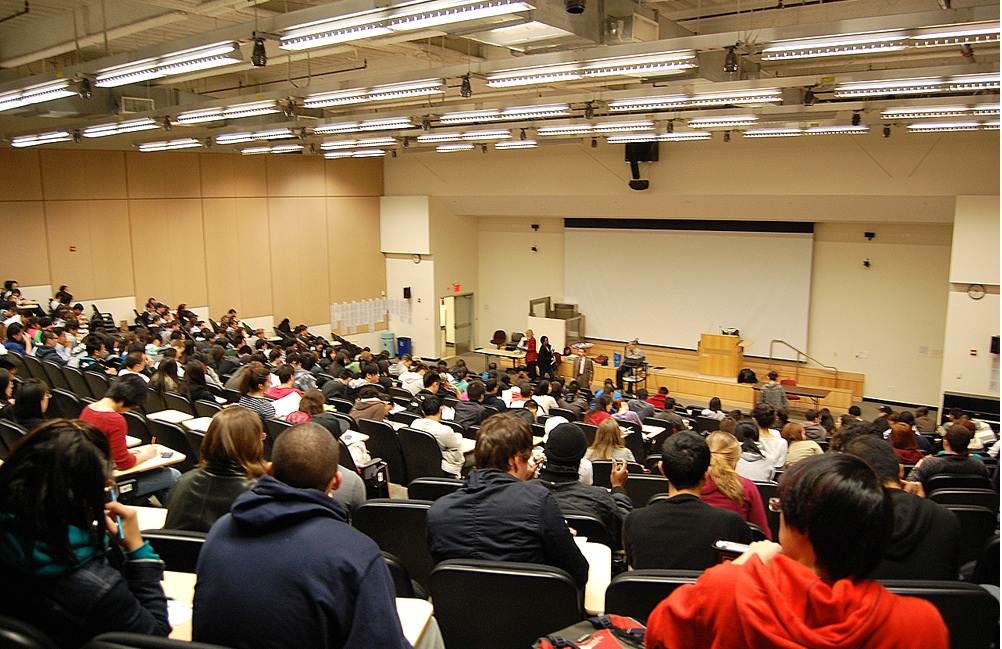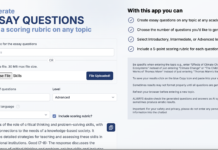
Universities and colleges in peril
In two previous posts (That was the year 2024, that was and Universities and Colleges in Peril) I argued that there was a growing loss of trust in post-secondary education and as a result, ‘It is not enough … for universities and colleges to whine for more money. It’s not coming. They need to re-think, not so much their purpose, but their whole modus operandi.’
It seems from the many comments I have received (mainly through my LinkedIn network) regarding these two posts that I am not alone in my concern that the institutions themselves need to change to win back this loss of trust.
In this post I will start by asking who are the key stakeholders, and what outcomes they are expecting, because to win back trust, stakeholders must feel they are getting the outcomes they expect from any commitment they make towards post-secondary education. But first, I must make some boring but necessary disclaimers.
Disclaimers
- Some of what I will be proposing will already be happening in some institutions. All I would argue is that not enough institutions are moving in the directions I am suggesting, or are not moving as quickly or as deeply as the crisis demands.
- Post-secondary institutions in general, and universities in particular, are complex institutions with many different and sometimes competing stakeholders. There is no single key ‘output’ or deliverable that will satisfy all the different stakeholders. The challenge then is not just to identify and measure the necessary outputs to meet stakeholders expectations, but to balance the demands of the different stakeholders. We shall see in my later posts that I believe that some stakeholders have too much influence on outputs at the expense of other stakeholders who are becoming more important over time for institutional survival.
- Perhaps the biggest problem is not so much direction or strategy, but implementation. Institutional cultures are extremely conservative. In many cases institutional leaders and other key stakeholders know their institutions have to change. It’s doing it that is the problem. The best way to tackle this is through governance, and I feel to some extent governance is beyond my expertise, but I do recognise that governance and implementation of change are major issues for post-secondary institutions.
- I know I don’t have the answers. This in the end must come from within the institutions themselves. All I can do is offer some suggestions. In particular, I am hoping to clarify some of the choices that institutions will have to make to survive and succeed in the future.
- In these posts I am talking about public post-secondary institutions. In Canada, this is the vast majority of universities and a sizeable chunk of vocational and professional colleges. The crisis may well lead to greater privatisation, especially in the vocational and professional sector. However, I am starting from the position that we need to protect our public institutions, because they provide an essential public service that should support the general good of society, not a narrow set of stakeholders.
Matching outcomes to stakeholders’ needs
To build trust, you have to deliver on expectations. This means identifying who the key stakeholders are in an institution, what their expectations are, and measuring how well these expectations are being met. The key challenge for every institution in a rapidly changing exterior world is to identify their key stakeholders, accurately identify their expectations, and to meet those expectations.
Stakeholders
So who are the key stakeholders?
-
Government
Because public institutions have the broad remit to benefit society as a whole, and because in a democracy governments are elected to represent their citizens as a whole, it is clear that government should be a primary stakeholder of public post-secondary institutions. However, they are a kind of overarching stakeholder, with many different interests (depending on the ideology of any particular government) that include:
- creation of qualified people for effective public administration
- creation of qualified people that can support a just society that includes effective legal systems, public health and education
- creation of qualified people who can directly contribute to local and national economic development
- equality, diversity and inclusion for those who access public higher education.
2. Students and family
Although government as stakeholder has a wide range of expectations, students and their parents have a narrower focus, which is the success of the individual student.
Since the beginning of the 20th century, governments and post-secondary institutions have moved to widen the remit of universities and colleges, resulting in a huge expansion of the post-secondary educational system, from educating a small elite for public administration, the law and the church, to making access to as many as possible, in particular, to meet the needs of a rapidly expanding economy, and to widen access to those from low income families, from racial minorities, and from other previously excluded groups. The widening of access is particularly important for a just society, since post-secondary educational qualifications are seen now as a pre-requisite for success in later life.
This is the major concern now for governments and individuals. This enormous expansion of higher education has been both necessary for a just and economically sound society but increasingly expensive in terms of cost, particularly for government, but also for parents and students.
Since governments and parents/students carry the main burden of the costs of the system, they should be rightly seen as the prime stakeholders.
3. Other stakeholders
However, governments and individual students and their families are not the only stakeholders. Others also have a stake or investment in the success of post-secondary institutions:
a. Faculty
Faculty have their own stake in universities in particular, which are essentially different from those of government and students. Faculty see the advancement of science or the increase of knowledge within their subject expertise as their key purpose, primarily through research. To protect their independence, essential mechanisms or principles such as tenure, academic freedom and sabbaticals have been developed. It is claimed that this insulation from the immediate demands of government or students enables the development of new ideas that are essential for innovation and change in both society and the economy. However, this comes at a high cost, since as much as half of faculty time may be devoted to their own interests.
b. Business and corporate interests
Commercial companies need skilled workers and managers, and so are often the direct beneficiaries of university or college education. However, in most cases, commercial companies are not direct investors in post-secondary education, other than through grants for research or charitable donations. However, the influence of especially large corporations, particularly on government, is considerable.
At the same time, the importance of universities and colleges for economic development go well beyond the immediate needs of local employers. After leaving post-secondary education, well-educated or skilled graduates are a key source for new entrepreneurial activity, creating new companies and even new areas of economic activity. The development of new economic activity is a key output of universities and colleges but is not directly linked to corporate investment in post-secondary education.
This is an area where outputs are not closely linked to inputs from key stakeholders other than government or students/family, but which are critical for economic and social development.
Outcomes or benefits
When costs go up, one starts to ask whether the benefits are worth the cost. This is the situation now in Canadian post-secondary education. It is particularly important then to measure the benefits. I will be arguing though that we need to go beyond the traditional means of stating outcomes but going further and ensuring that these are measurable in ways that are understandable and appealing to the key stakeholders.
Once again, universities in particular are complex. They have a number of potential benefits or outcomes.
1. Learning
2. Research and innovation
3. Economic development
4. Democratic and social development
A growing mismatch between investors, costs and beneficiaries
The most direct beneficiaries of a post-secondary education system are the students. However, these are benefits that are delayed into middle or late careers after graduation. Students and their families have been paying (at least in Canada) a higher cost for access to post-secondary education to the point where they are complaining, then having to wait, often many years, to see the return on that investment.
A major beneficiary of a broad public education system are employers who receive at least partly and in some cases wholly trained personnel, but employers are not a direct investor although through the collection of taxes they are very indirect investors (because much of their taxes go to the Federal government and not to the provinces, which are largely responsible for post-secondary education in Canada.)
The challenge
It is difficult to tie investment for particular investment sectors in higher education directly to the benefits. For governments, they need to see the direct return through economic and social development, but the immediate beneficiaries are businesses and individuals, and for individuals the benefits may not become apparent until a number of years after graduation. Businesses themselves will claim the credit for economic development, even though they may be reliant to some extent on the output of post-secondary education. At the same time, the overall cost of higher education is going up, due to widened access, multiple demands on universities and colleges, and inflation, while post- secondary institutions are still dependent on legacy management and operations designed originally for much smaller numbers.
If then it is hard (but not impossible) to relate costs directly to benefits, and costs are going up to the point where it is causing stress for the main stakeholders, then there needs to be a focus on reducing both overall costs, and in particular increasing efficiency within the institutions. For instance, institutions have found it difficult to achieve economies of scale in teaching despite the increase in student numbers. Demonstrating increased cost-effectiveness will be more compelling than arguing for diffuse and hard to demonstrate benefits.
A necessary background
First and foremost, because of the range of stakeholders and and possible benefits, it is necessary for the institutions themselves to identify clearly their prime stakeholders and the perceived benefits that result for such stakeholders, and try to build clear lines of communication of how the stakeholders are benefiting. Most post-secondary institutions try to do this, but because of the weak link between investor sectors and the benefits for that investor sector, the results are often not compelling: benefits are often more widely dispersed or delayed for several years.
Secondly, the system has expanded greatly without significant changes to operations in the form of teaching methods, research activities, and internal administration.
Because of the diffuse nature of the benefits from post-secondary education, institutions need to focus on making their operations more cost-effective, with the aim of both reducing overall costs for key stakeholders, while increasing the benefits or output from the institutions’ activities. This is more visible than arguing the general benefits of post-secondary education to stakeholders who are more concerned about the rising costs. Although it is the responsibility of the institutions to set the goal of becoming more cost-effective and finding the best ways to do this, I will in the next posts suggest some ways in which this might be approached.

Over to you
Do you agree that the main concern of the public and governments today about post-secondary education is not so much the benefits but the costs?
Is there evidence that (a) there is less public support today for post-secondary education (b) that costs of HE are a big problem?









 Dr. Tony Bates is the author of eleven books in the field of online learning and distance education. He has provided consulting services specializing in training in the planning and management of online learning and distance education, working with over 40 organizations in 25 countries. Tony is a Research Associate with Contact North | Contact Nord, Ontario’s Distance Education & Training Network.
Dr. Tony Bates is the author of eleven books in the field of online learning and distance education. He has provided consulting services specializing in training in the planning and management of online learning and distance education, working with over 40 organizations in 25 countries. Tony is a Research Associate with Contact North | Contact Nord, Ontario’s Distance Education & Training Network.


From T.Damian Boyle:
Thanks, Tony. Individuals, Organizations, and Governments require Certifications that allow for economic activity with due regard for workplace and public safety and protection from harms. Certifications are typically acquired through regulated competency challenge exams — at the pleasure of the Government. Degrees may be preparatory for attempting the regulated competency challenge exams, but not necessarily requisite for these. What would happen if Certification Challenge Exams were offered on a fee for attempt basis, with no degree requirement? (“Four strikes and you’re out.”) Why waste time attending classes at institutions if one can study independently at home while also earning a living? Entrepreneurial minded individuals are likely to prefer this approach, I believe
I look forward to part 2 and your suggestions for squaring the circle. A couple of things stood out for me in this piece.
When you say “a major beneficiary of a broad public education system are employers who receive at least partly and in some cases wholly trained personnel” – do you think this has changed as post-secondary uptake has increased? Have ‘western’ societies now abandoned the idea of paid apprenticeships and employers bearing the cost of training their staff? It seems to me that private concerns place demands on public education that are out of step with the contribution they make, especially in Canada, as you point out, where provinces pay for public post-secondary.
When you say “*It is claimed* that this insulation from the immediate demands of government or students enables the development of new ideas that are essential for innovation and change in both society and the economy” – are you suggesting that this isn’t a reasonable claim from tenured and other faculty?
Looking forward to hearing how proud Canadian universities could be made by provincial governments to give up many of their precious but low-population courses or get their students to take them remotely from specialist providers – in my view it will have to come to this, even in Canada, if current developments (tariffs, wars, aging populations etc) in US and Europe continue, as money for HE will start being very tight.